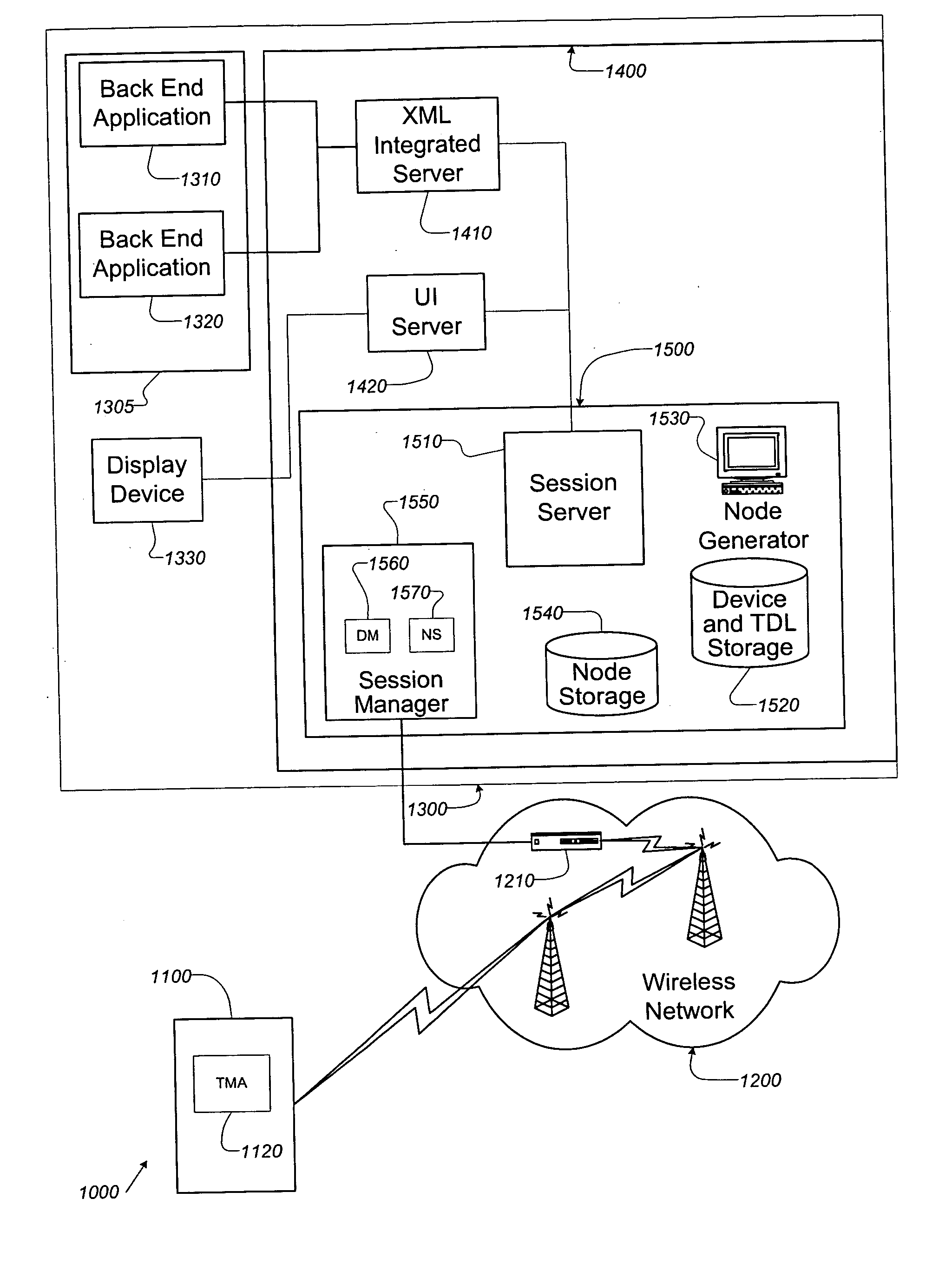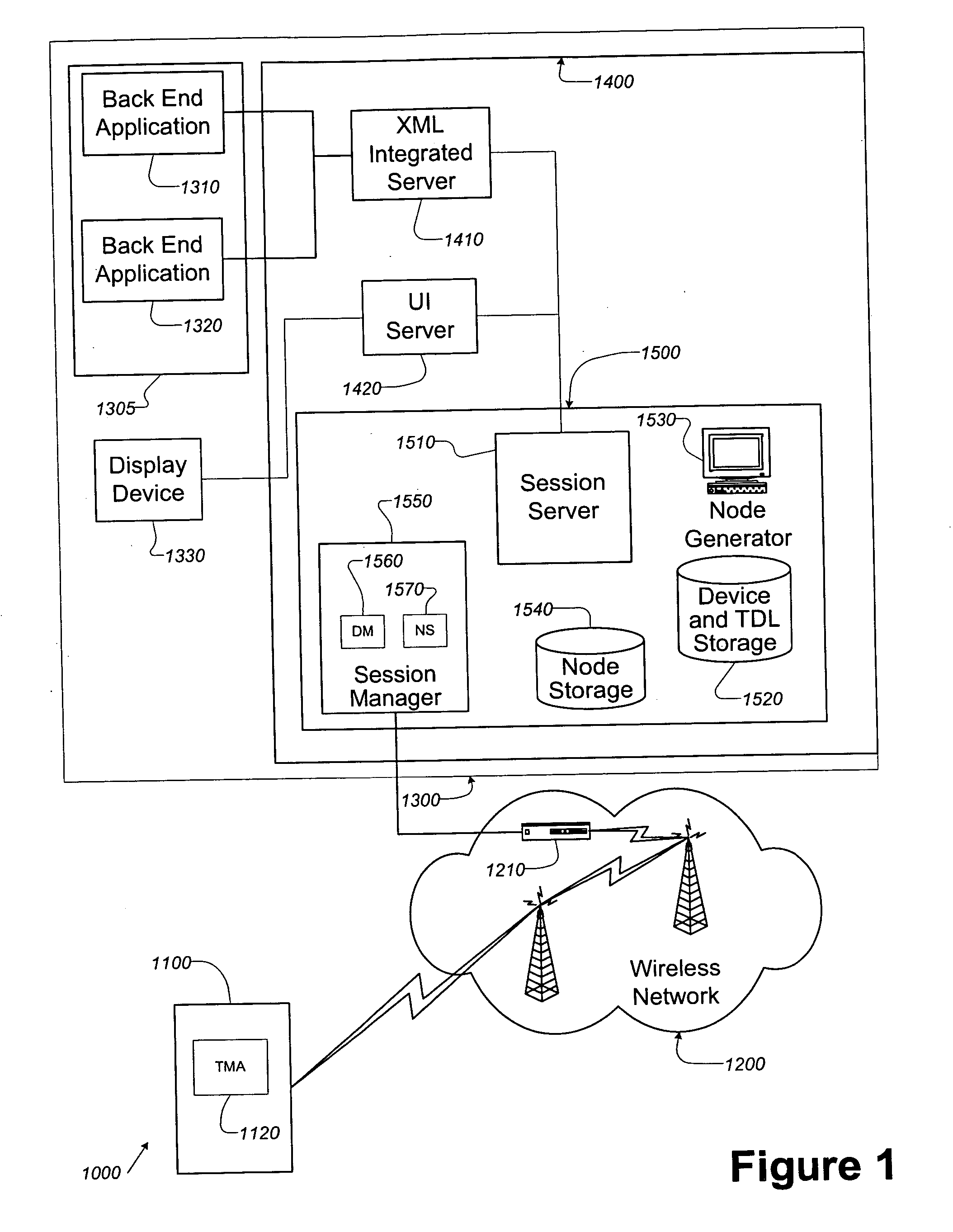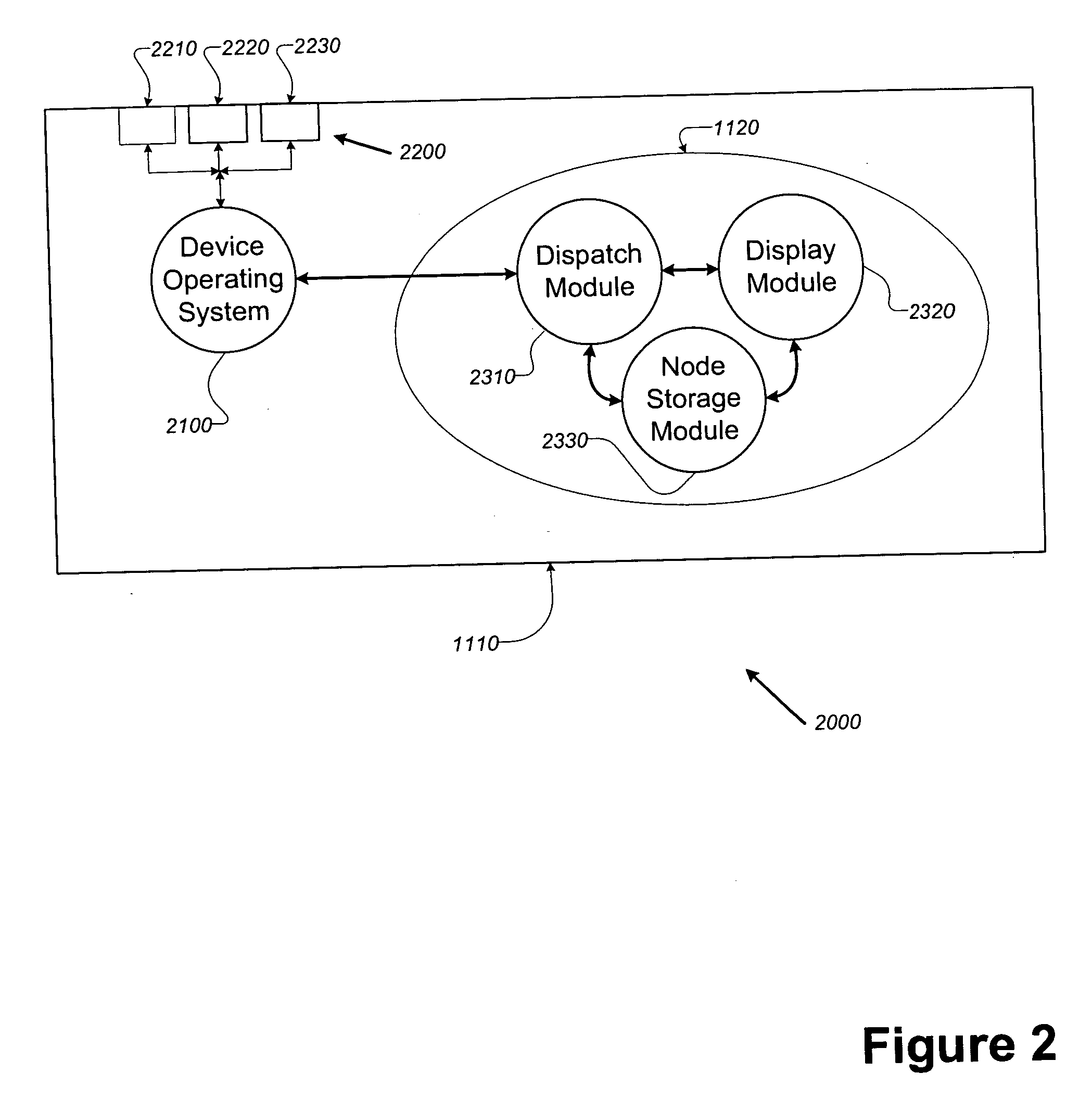System for extending business systems to a mobile workforce
a business system and workforce technology, applied in the field of wireless telecommunication, the construction and management of wireless applications, can solve the problems of inability to meet continuously with a point of presence, inability to accomplish tasks, and inability to achieve productive data processing, etc., and achieve the effect of level of connectivity and signal intensity
- Summary
- Abstract
- Description
- Claims
- Application Information
AI Technical Summary
Benefits of technology
Problems solved by technology
Method used
Image
Examples
Embodiment Construction
TABLE OF EXEMPLARY ILLUSTRATIVE NON-LIMITINGINTEGRATION TAGS AND MESSAGESTag NameHow UsedRqdDefault ValuenewWorkOrderMsg - creates a new work order.workOrderNoSpecifies the work order number toYesNonebe created.csrUserNameSpecifies the CSR username.Note 1See Note 1.csrPasswordSpecifies the CSR passwordNote 1See Note 1.csrFirstNameSpecifies the CSR's first name.Note 2See Note 2.csrLastNameSpecifies the CSR's last name.Note 2See Note 2.requestDescCustomer's problem description orNoNot Specifiedrequest description Normallyentered in the Request tab of theJumpstart application.requestTimeTime that request was created.NoCurrent date and time value.Format: (mm / dd / yyyy hh:mmam / pm)priorityOne of the following: Urgent, High,NoMediumMedium, or LowcontLastNameLast name of person who requestedNoNonethe service.contFirstNameFirst name of person who requestedNocustNamethe service.contUserNameuser name of contact.NocontFirstNamecontPhoneRequester's phone numberNoNonecontMobilePhRequested's mobile ...
PUM
 Login to View More
Login to View More Abstract
Description
Claims
Application Information
 Login to View More
Login to View More - Generate Ideas
- Intellectual Property
- Life Sciences
- Materials
- Tech Scout
- Unparalleled Data Quality
- Higher Quality Content
- 60% Fewer Hallucinations
Browse by: Latest US Patents, China's latest patents, Technical Efficacy Thesaurus, Application Domain, Technology Topic, Popular Technical Reports.
© 2025 PatSnap. All rights reserved.Legal|Privacy policy|Modern Slavery Act Transparency Statement|Sitemap|About US| Contact US: help@patsnap.com



